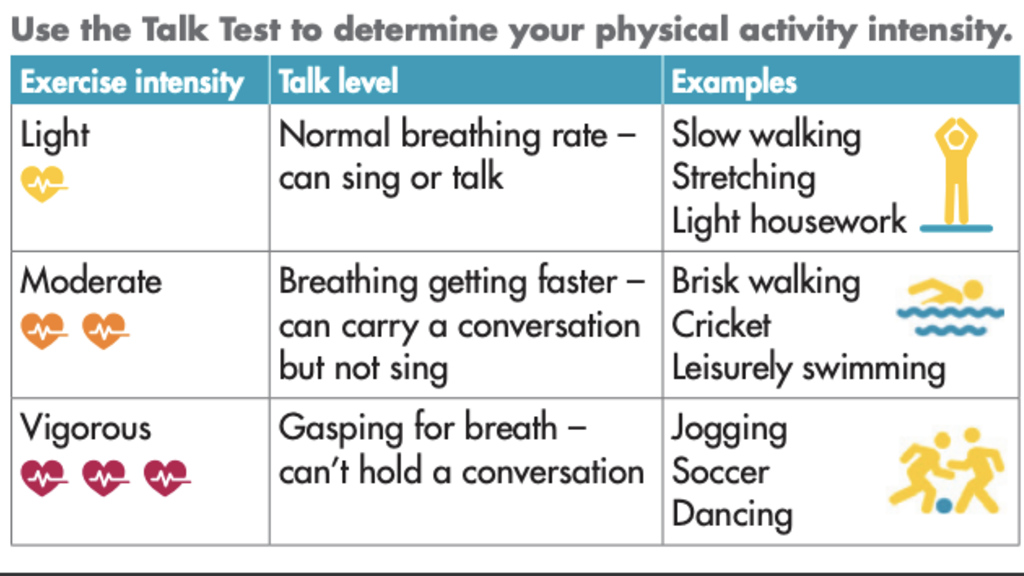Is Your Daily Walk Actually Doing Enough for Your Heart? Here’s How to Tell.

You lace up your sneakers every morning, circle the neighborhood for 20 minutes, and check ‘exercise’ off your daily list—but is your comfortable stroll actually protecting your heart, or just burning time?
Here’s the problem: Most people assume any daily walk counts as heart-healthy exercise. It doesn’t. Research shows that pace, duration, and intensity matter way more than simply moving your feet. Without specific markers, you might be walking religiously while missing the cardiovascular benefits you’re counting on.
This isn’t about walking more—it’s about walking smarter. You’ll learn the exact walking parameters cardiologists recommend for heart protection. We’ll cover simple self-tests to measure if your current routine meets clinical standards, plus warning signs your walk isn’t intense enough.

By the end, you’ll know how to adjust your heart-healthy walking routine for maximum cardiovascular benefit. No guessing. No wasted effort. Just clear answers about whether your daily walk heart health routine is actually working.
What Cardiologists Actually Recommend for Walking and Heart Health
Let’s start with the clinical standard—what does your walking routine actually need to include for heart protection?
The American Heart Association sets a clear benchmark: 150 minutes of moderate-intensity walking each week. That breaks down to 30 minutes, five days a week. If you walk at a brisk pace where you’re breathing harder but can still talk, you meet the standard.
But here’s where most people get confused. Moderate intensity isn’t just moving—it means reaching 50-70% of your maximum heart rate. That’s the zone where your heart actually gets stronger.

Studies in the Journal of the American Heart Association found that walking at 3+ mph reduces heart disease risk by 30-35%. Walking slower than 2.5 mph? It barely moves the needle for cardiovascular benefits. The difference isn’t small—it’s the gap between real protection and just burning a few calories.
Here’s the truth: casual strolling doesn’t count toward your 150-minute target. Your heart needs challenge to adapt and strengthen.

Duration matters too, but intensity makes the real difference. You can walk 300 minutes weekly at a slow pace and get less cardiovascular benefit than 150 minutes at a brisk pace. Both elements—time and effort—work together to protect your heart.
The good news? You can split your walks into 10-minute chunks throughout the day. Three 10-minute brisk walks equal one 30-minute session for cardiovascular benefits.
Bottom line: A 30-minute walk at a pace where you’re breathing harder but can still talk—done five days a week—hits the clinical threshold for heart protection.
The Talk Test – Your Simplest Walking Intensity Gauge
You don’t need fancy equipment to know if you’re walking hard enough. There’s a simple test you can do right now—and exercise physiologists say it’s as reliable as a heart rate monitor.
Try speaking a full sentence out loud while you walk. You should be able to say “I’m walking through the neighborhood and feeling good” without gasping for air. But if you tried singing “Happy Birthday,” it should feel challenging and uncomfortable.

That’s the sweet spot for moderate-intensity exercise. Your breathing is harder, but you’re not struggling.
Here’s why this works. When you can talk but not sing, your heart rate sits at 50-70% of maximum—exactly where it needs to be for cardiovascular fitness. Your body is working hard enough to strengthen your heart without overdoing it.
Think of it like climbing two flights of stairs. You notice your breathing, but you’re not exhausted. That’s the same breathlessness you want during your walk.

Use this simple guide:
- Can sing easily = too slow, speed up
- Can talk but not sing = perfect intensity
- Can’t talk in sentences = too fast, ease off
Walking with a friend? Conversation should be possible but choppy. If you’re chatting easily about your day without any effort, you need to pick up the pace for real cardiovascular benefits.
Note: If you have asthma or other respiratory conditions, this test may not work well for you. Stick with heart rate monitoring instead.
7 Physical Signs Your Walking Routine Is Working
Your body gives you clear feedback about whether your walk is intense enough. Here are seven signs you’re in the effective zone for heart health.
1. Your Breathing Changes Noticeably
You should breathe harder and deeper during your walk. It’s similar to how you breathe when climbing two flights of stairs—rhythmic but stronger than normal.

You’re not gasping or struggling, just working.
2. You Break a Light Sweat Within 10-15 Minutes
This depends on temperature, but most people should feel some perspiration.

If you could do your walk in office clothes without any physical discomfort or sweating, it’s likely too easy. Your body heats up when your heart works harder.
3. Your Leg Muscles Feel Warm and Engaged
Your calves and thighs should feel active. There’s a warmth in the muscles that tells you they’re working.

This is different from pain—it’s engagement.
4. You Can Feel Your Heartbeat

You’re aware of your pulse without feeling uncomfortable. Some people notice it in their chest, others in their neck. It’s a sign your cardiovascular system is actively engaged.
5. Talking Requires Effort
Conversation is possible but choppy. You can answer questions, but chatting easily about your day feels harder than usual. This is the talk test in action—a reliable walking intensity indicator.
6. You Feel Energized During and After
Good walks leave you feeling more awake, not exhausted.

This energy boost should last 1-2 hours after you finish. If you’re immediately tired or need to sit down, you might be pushing too hard.
7. Your Heart Rate Drops Quickly
Within 5-10 minutes of stopping, your breathing returns to almost normal. You should be able to have a regular conversation within 10 minutes of finishing your walk.

Check yourself: If you’re experiencing 5-6 of these signs, you’re hitting the right intensity for effective walking for heart health. Fewer than 4? Time to increase your pace.
Should it feel hard? Moderately challenging, yes. Exhausting, no. Everyone’s different—some people sweat more, others less. Focus on the overall pattern, not perfecting every single sign.
How to Upgrade Your Walking Routine for Better Heart Protection
Ready to increase intensity? Here are six proven strategies to optimize walking for heart health, plus a simple 4-week plan you can start tomorrow.
Strategy 1: Gradually Increase Your Pace
Add 0.25 to 0.5 mph to your speed each week.

If you’re walking 2.5 mph now, aim for 2.75 mph next week. Keep building until you hit 3-4 mph—the zone where heart protection really kicks in.
Strategy 2: Add Interval Bursts
Alternate 2 minutes of fast walking with 1 minute of normal pace. This boosts walking intensity for cardiovascular fitness more than steady-state walking.

Your heart adapts faster when you challenge it with variety.
Strategy 3: Find Hills or Stairs
Inclines force your heart to work harder without increasing speed.

Look for routes with 2-3 hills, or add one flight of stairs before or after your walk. Don’t have hills? Walk the same flat route but increase your speed instead.
Strategy 4: Extend Your Time
If you’re walking 20 minutes now, build to 30 minutes over the next month. Add 5 minutes each week.

Longer duration gives your cardiovascular system more time in the training zone.
Strategy 5: Pump Your Arms
Bend your elbows 90 degrees and swing your arms faster. Faster arm movement naturally drives faster leg turnover.

This simple form change can add 0.5 mph to your pace without feeling like you’re working harder.
Strategy 6: Track Your Progress
Write down how far you walk in 30 minutes each week. Or note your heart rate at your usual pace.

Seeing improvement—even small gains—keeps you motivated and shows your progressive walking program is working.
Your 4-Week Plan
Week 1: Walk your normal route but pump your arms vigorously for three 5-minute segments.
Week 2: Find a route with hills, or walk your flat route 0.5 mph faster.
Week 3: Try intervals—alternate 2 minutes of pushing yourself with 2 minutes at normal pace for 30 minutes total.

Week 4: Combine everything—faster pace, arm pumping, and one hill if possible.
Safety note: If you’re over 50 or have any heart conditions, talk to your doctor before significantly increasing intensity. Small changes are safer and more sustainable than dramatic jumps.
Here’s what matters: A 10% increase in pace can mean 25% better cardiovascular adaptation. Small changes compound into major heart protection over time. You’re not looking for perfection—you’re looking for progress.
Lastly:
So, is your daily walk doing enough for your heart?

Your daily walk protects your heart only when it reaches moderate intensity. That means breathing harder, light sweating, and engaged muscles. It also means hitting 50-70% of your max heart rate and walking at 3+ mph. Both the feeling and the numbers matter.
Here’s the truth: If you’re walking comfortably enough to text or chat effortlessly, you’re moving but not exercising your cardiovascular system. Movement is good. But it’s not the same as heart-protecting exercise.
Tomorrow morning, try the talk test during your walk. Speak a full sentence out loud. If you can sing “Happy Birthday” comfortably, you need to speed up. Gradually increase your pace each week until conversation becomes slightly challenging. That’s your target zone.

Your heart doesn’t need perfect—it needs consistent, moderate effort. Make one adjustment this week. Add some arm pumping. Find a hill. Walk 0.5 mph faster. Any of these moves you closer to real protection.
Making these simple adjustments ensures your daily walk delivers real heart health benefits, not just step counts. Small changes now mean decades of stronger cardiovascular health. Your heart will thank you for the extra effort.






